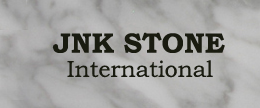By Jodi Paper
"Material is usually selected by the architect. The material test data will be reviewed by the engineer, and he will determine if the granite can be used as intended. For example, some gold granites generally produce lower strength values in testing than, say, a black," Weis explained.
Still, "most granites work well for both interior and exterior applications," said Ruoff, "including flooring, fireplaces, curbing, stairs, steps, and, of course, kitchen countertops. An added advantage is the variety of surfaces available — polished, honed, thermal, rock, tooled, stippled — it's pretty easy to customize a look."
And, this customization has come even further with the advent of granite switch plates. "With granite countertops and backsplashes becoming so popular in kitchens all across the United States, we noticed there were white switch plates in this beautiful new kitchen," said Jeff Oster, vice president of sales for Mirart Inc. in Pompano Beach, Fla. "The contrast made them stick out like a sore thumb, so we created matching granite switch plates to accent the beauty of the installation."
Mirart can use the actual granite from the client's kitchen — from the drop from a sink or the cooktop, for example — to create an exact match. Or, the switch plates can be made from Mirart's stone. "We start with full thickness of granite slab and cut down thin enough to make a switch plate," Oster said. "We then use diamond tools to make the appropriate cut-out and finish the plate to the customer's specification and ship. The process is pretty elaborate and takes approximately four weeks."
"Elegance, strength and quality are characteristics that many large corporations, financial institutions, and governments have recognized down through the ages," said Ruoff. "And [granite] is how they send a message about who and what they are."
One project in which the message of strength and quality can't be missed is at the Mall of the Emirates in Dubai. The Mall of the Emirates is more than two miles long and accommodates approximately 50,000 people per day. In 2007, the mall is expected to receive in excess of 27 million visitors. With so much foot traffic, not any flooring material would do.
"Our options were carpet, concrete, or something hard enough to sustain that amount of activity," said the lead architect on the project, Andy Feola of F+A Architects in Pasadena, Calif. But since the mall — which might be considered more of a shopping resort and which houses a number of "districts," including high-end fashion "streets" and an indoor winter sports complex — is far from typical, the flooring itself needed to be extraordinary.
"After a lot of discussion and testing [of various materials], we decided on granite," Feola said. "Softer floor materials have a tendency to literally break down under pressure. When we got down to it, granite was the material to use."
Twenty-six different kinds of granite were utilized to create the impressive floor. The granite was imported from all over the world. These imports include a honeycomb variety from Italy, Azure Blue from Brazil, and selections from North Africa and China, to name a few. After the granite was cut and polished in Portugal, it was shipped to Dubai for installation.
With so much floor space to cover, the architects had to come up with a plan. They decided to section the floors by stone block. "We took each slab and cut it into a nine-piece pattern that we rotated ninety degrees [with each section]," Feola said. "This helped us avoid distinctive changes in the color of the granite and created a consistency throughout."
The mall, home to several hotels and an indoor ski area, is sectioned into "courts," including an entertainment, food, and fashion. "We designed a series of colorful granite medallions at each intersection, which change color from court to court," Feola explained. "The overall design is closest to a Moorish style, which finds its roots in the Mediterranean, heavily influenced by Moroccan, Spanish and Italian styles. The details and patterns are Arab influenced." The result is a truly global work of stone art, or "floor architecture," as Feola put it, that probably could not have been achieved without granite.
"Granite is just a fantastic material, and we can use it in so many ways," he said. "Water-cutting allows us to do many things with granite we would have been cautious about in the past. Now there is no limit to the type of cut we can get. We can achieve design goals in granite without having to sacrifice hardness or stone quality. Working on this project really opened our eyes to the possibilities. We couldn't have asked for anything better than granite."
Granite can easily be considered the epitome of natural stone; it is an extremely versatile material with a plethora of applications, colors and styles. Incorporating granite into any project, whether interior or exterior, as an accent or primary element, in a traditional or innovative treatment, or for large or small projects, opens up an entire world of solid possibilities.

